How today's rapidly evolving world of unified communications and collaboration is impacting IT teams in the workplace.
Executive Summary
Recent years have brought about massive changes in the world of unified communications and collaboration (UC&C). The pandemic and its domino effect has prompted a surge in technological advancement, permanently changing how organizations and people consume technology and conduct business.
The subsequent events have created a working culture that has enabled us to become digitally connected, while physically apart. But this heavy reliance on digital technology, and the forced move to more robust IT infrastructures has impacted IT teams in numerous ways.
To understand more about the ever-increasing responsibility of IT teams and how they manage their organization’s ever-changing technology, we surveyed over 200 IT practitioners in the United States, United Kingdom and Singapore.
What we uncovered was that in today’s working environment, the pressure on IT teams to keep things running smoothly is not easing.
In this report, we look at the key findings of the survey in more detail and uncover how and why the UC&C industry is evolving so rapidly. We’ll share some insights from the respondents as to what these changes mean for future growth, and how IT practitioners see the immediate future of their industry.
The aim of the survey was to better understand the main challenges and concerns facing individual IT contributors in today’s evolving workplace.
The key findings in this report include:
- Over 50% of respondents have experienced an increase in their day-to-day workload due to the ongoing changes and complexity of UC&C.
- Respondents were asked what they found most frustrating when working across multiple UC&C tools. The main challenges were: Wasting time troubleshooting issues, and reactive troubleshooting – i.e., not being aware of issues until reported.
- When it came to managing user experience, respondents reported the most challenging issues to be: Identifying how many users are using provided hardware, and identifying which platforms users were not utilizing.
- 95% of respondents reported they wasted between two and more than ten hours per week managing these frustrations. 25% reported they waste more than 8 hours a week, that's one full work day.
- 45.5% of those surveyed said the biggest issue of concern to their managers was an increase in operational costs.
- Many respondents reported they had changed roles or left their jobs over a three-year period. Reasons cited were: Better quality of life, increased salary and better working conditions.
Interested to hear what else your peers have experienced?
The shape-shifting world of unified communications and collaboration
The last few years have brought about enormous changes in the structure of organizations, and as a result, forever altered the way people do business globally. It has also placed more pressure on IT teams. It’s not just day-to-day operations that require constant vigilance.
The digital revolution has caused a tsunami of technology that’s evolving almost faster than anyone can keep up with. This requires constant learning and re-training, which takes time, resources, alterations to infrastructure – and budget. This has turned up the heat on IT engineers.
Here are some of the ways in which digital transformation has altered the UC&C environment for enterprise organizations.
- The Internet of Things (IoT) has enabled an endless influx of new technology and tools that are continuously carving new pathways into the UC&C space, and making business agility possible.
- Hybrid and remote working models in their various configurations are not only commonplace, but also commodities for both employers and employees to barter for better conditions, higher salaries, superior talent, and additional opportunities.
- Cloud adoption is accelerating, and we’re seeing organizations of all sizes increasingly moving critical processes and tools into this endlessly flexible, agile environment.
- The rise of AI driven tools and applications is already having an impact on UC&C for many organizations. AI bots and platforms are helping to simplify workflows and improve internal communications by collecting, analyzing, dispersing, and acting on data.
This universal evolution is intended to empower workers as well as boost efficiency and reduce operational costs in today’s workplace.
But as enterprise organizations move away from legacy systems and a stagnant working culture to embrace the benefits of digital transformation in the workplace, there are risks, challenges, and costs.
Let’s take a more detailed look at the key findings in our report.
Key Finding 1: IT practitioners and their ever-increasing workload
Every IT department is different, based on the needs of the individual organization, the types of systems they work on, and the skills of each team member.
From providing overall technical support to installing and configuring hardware and software. From monitoring and performance management, to managing cloud infrastructure, IT teams play a huge role in keeping the wheels of enterprise turning.
From a big picture perspective when asked on a scale of 1 to 10 how much has their role been impacted by changes in UC&C, respondents ranked the impact to be 6 out of 10, on average.
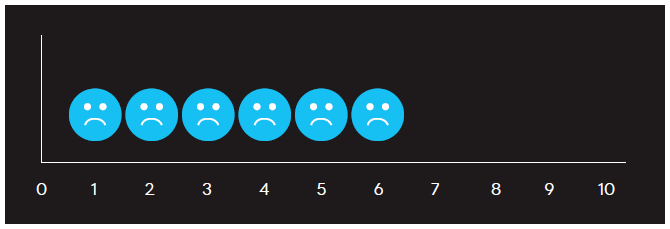
Day-to-day, over 50% of our respondents reported they experienced an increase in their workload due to the ongoing changes and complexity of UC&C.


Addressing the issues
Without monitoring systems in place, IT teams have no visibility or control of their organization’s increasingly complex UC environment.
With the right monitoring solution, teams can easily see the multiple communication platforms from a single window. This enables them to see what’s going wrong and where, and provides proactive ways to solve problems faster and more efficiently.
Key Finding 2: The frustrations of working with multiple UC tools
IT teams today need to adopt an adaptable approach that supports flexible work. But this is easier said than done.
IT departments are constantly facing unprecedented challenges in optimizing their technology and workflows to accommodate onboarding, training, and support for location-agnostic employees, many of whom use their own UC devices and applications. This creates a huge amount of complexity.
Our survey respondents were asked what they found most frustrating when working across multiple UC&C tools. The main challenges were: Wasting time troubleshooting issues, and reactive troubleshooting – i.e., not being aware of issues until reported.
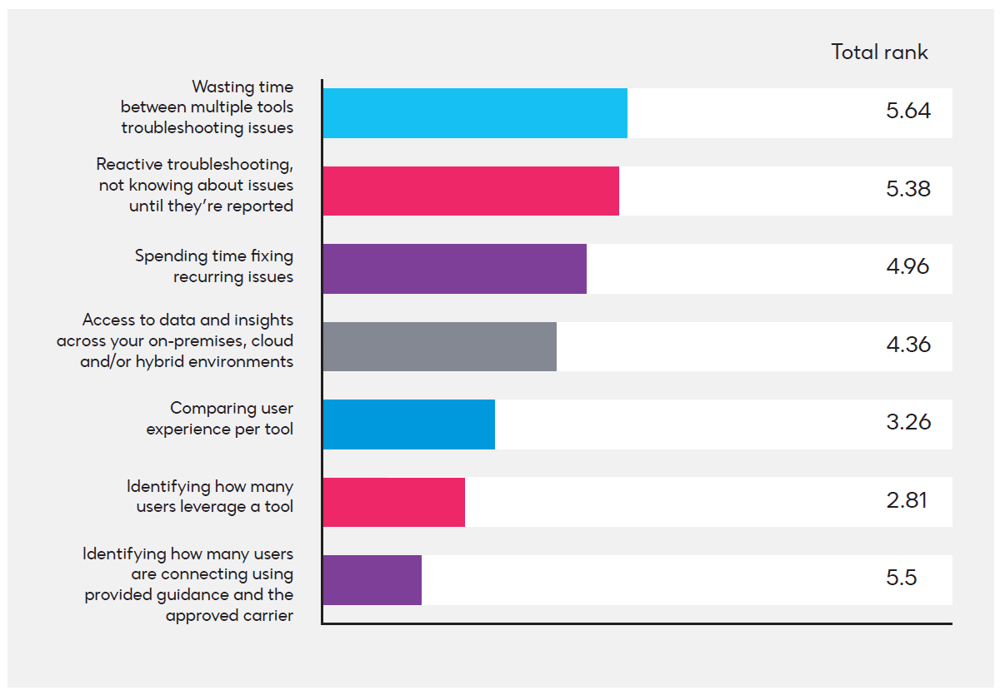
Some of the other frustrations included spending time fixing recurring issues, and lack of insight across on-premises, cloud and/or hybrid environments.
Addressing the issues
It’s not just multiple platforms that can cause communication issues. With various devices thrown into the UC mix, it adds additional complexity and the chance of dropped, or poor quality calls, leading to more troubleshooting time for IT departments.
Monitoring and performance management solutions can clearly pinpoint exactly which devices are causing problems, without having to waste many hours manually trying to find the source of problems.
Key Finding 3: Managing user experience (UX)
IT teams work on the front line when it comes to fixing product problems for disgruntled end users. They need to ensure optimum device performance, even when many of those devices are Bring Your Own Device (BYOD), and multiple communications platforms are being used.
When it came to the issue of managing user experience, respondents reported the most challenging issues to be: Identifying how many users are using provided hardware, and identifying which platforms users were not utilizing.
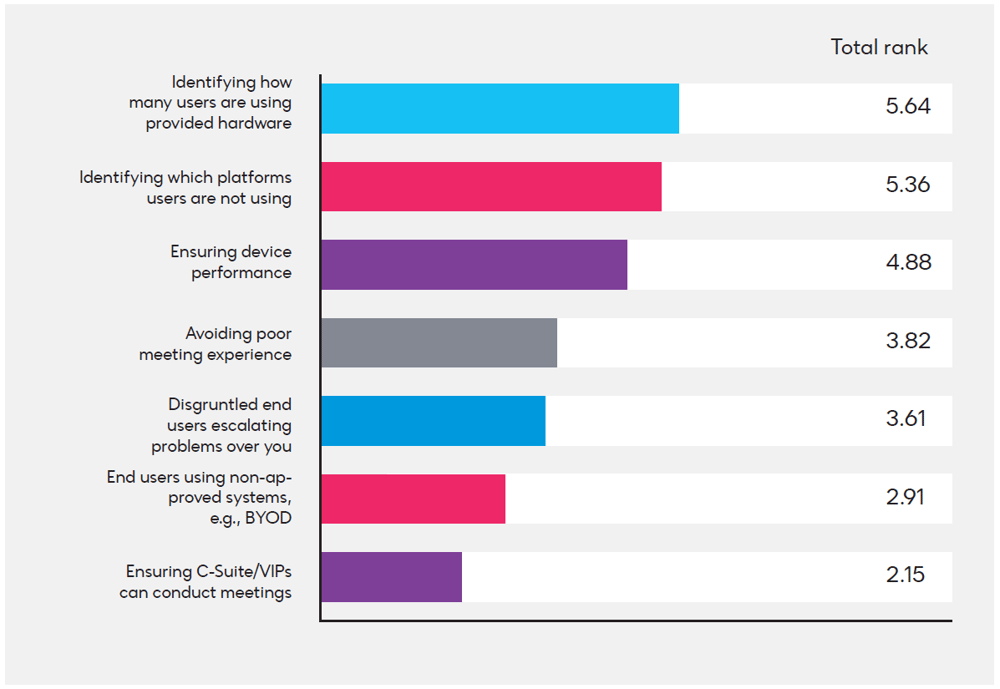
Avoiding a poor meeting experience is a critical part of the job for IT teams, but the ongoing introduction of new technology, not to mention security issues with non-approved devices, and keeping track of it all makes this extremely challenging.
Addressing the issues
Not only is it important to keep track of all devices and platforms, but it’s up to IT to monitor the level of usage and satisfaction with these various systems to determine their viability.
Performance management solutions show whether employees are actually adopting the tools and platforms, and can measure the frequency of usage. This provides valuable information as to future acquisition and installation of new systems and devices.
Key Finding 4: A quarter are wasting one full day each week
The majority of respondents to our survey reported that the amount of time wasted solving the issues we’ve mentioned had a significant impact on their productivity, and left them with less time to focus on more important work.
25% of respondents reported they wasted more than eight hours per week managing these frustrations, while 5.5% waste more than 10 hours a week. 69% of respondents waste between four and more than 10 hours per week completing extra work associated with these tasks. In effect, IT teams become the ‘fire-department’ of an organization, and this reactive problem-solving translates into not only lost productivity but also lost revenue.
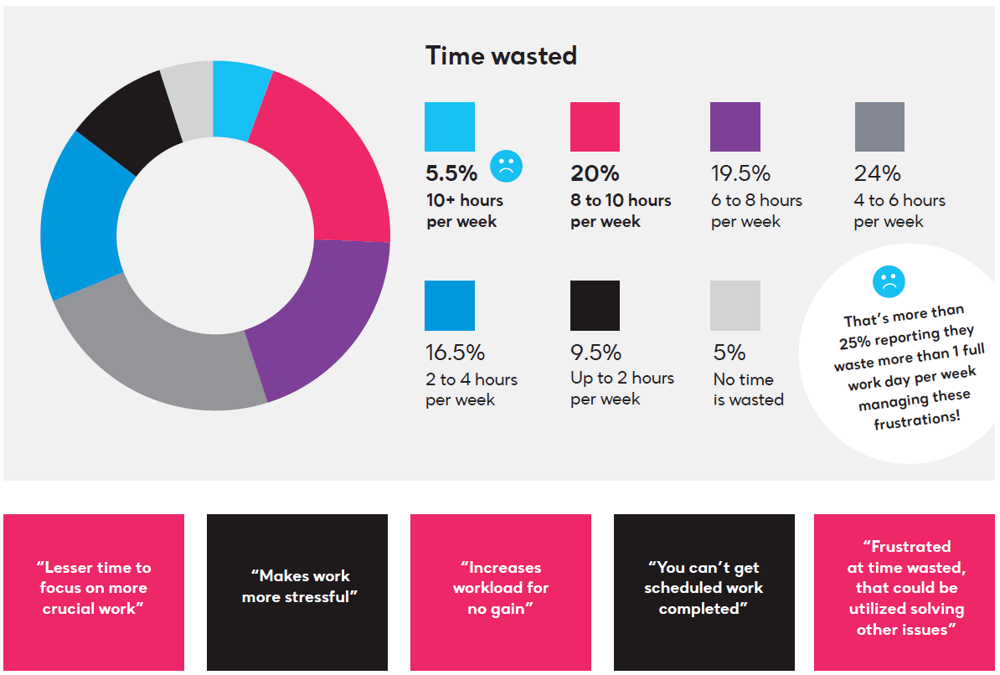
Obviously, the unexpected will always be lurking, but when the focus is on reducing the occurrence of the fire, rather than putting it out, the results will speak for themselves.
Addressing the issues
Deploying new technologies is always risky. Without testing these technologies, IT teams have no way of predicting whether they will add value to the unified communications environment, or even work at all.
Testing and quality assurance is aimed at detecting and solving technical issues before deployment and integration. This determines the overall usability, performance, security and compatibility, and avoids unnecessary disaster management.
The end result is an improvement in employee productivity and user experience, less downtime and ultimately, cost reduction.
Key Finding 5: Issues most concerning for IT Managers
An IT department is no longer just responsible for installing new hardware and software and resolving technical issues.
With the acceleration of digital transformation, most businesses are aware of the strategic potential and the need for IT teams to become involved in transforming business operations.
After all, every business wants a competitive edge in a rapidly evolving world, and the change in business perspective has added more weight and responsibility to an IT manager’s role.
45.5% of our survey respondents said that a major concern to their managers was controlling operational costs to keep in line with overall company goals and the CIO’s strategy.
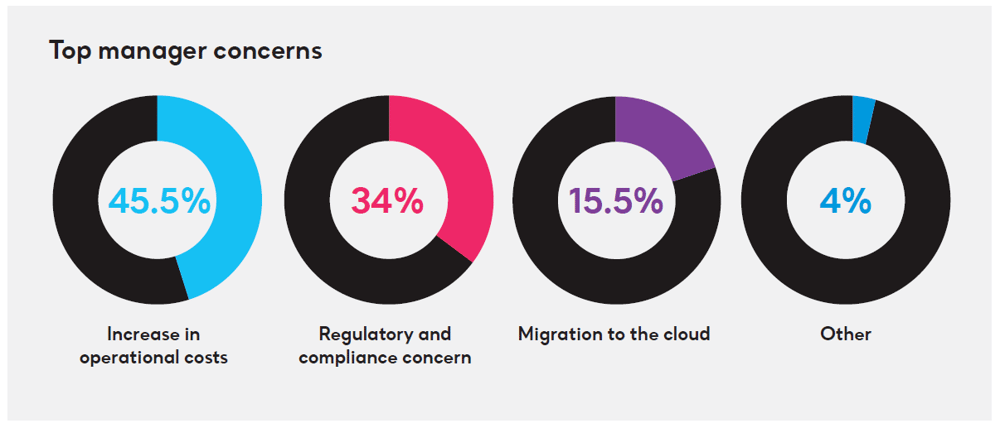
The other main concern was regulation and compliance. Organizations typically have their own security procedures and policies in place, which need to align with multiple regulatory compliance frameworks.
Addressing the issues
Monitoring solutions can not only track performance, but also ensure regulatory compliance and reduce liability and possible penalties. This greatly reduces the pressure on IT teams to keep operational costs under control.
Monitoring ensures that a business’s operations are working as they should, and can identify any areas of non-compliance, whether internally or externally.
Key Finding 6: IT departments are not immune to the great resignation
If there was anything positive about the impact of the pandemic, it was probably that it cleared the way for reflection and re-evaluation of the important things in life.
The catharsis from this was that job mobility would become a new way of life. While our survey confirmed that many respondents had changed roles or left their jobs over a three-year period, it was certainly no surprise.
Reasons were cited as: better quality of life, increased salary, promotion and better working conditions. In the work-from-anywhere model, technology plays a huge role in defining employee experience, driving productivity, attracting talent, and creating an overall positive workplace culture.
The drawbacks of this include lack of interoperability, network and connectivity issues, cybersecurity issues, the use of multiple devices and platforms and more.
As we’ve already discussed, this increases the pressure on IT teams, and potentially adds to their own reasons for joining the ‘great resignation’.
Future predictions
The UC&C space has made massive strides in recent years, with technology advancing at the speed of light. This report has highlighted just how much impact the market has had on IT professionals. So what do they think is going to come next?
Many of those we surveyed gave us their views and predictions on what could be the next major evolution in unified communications and collaboration.
Here are some of their responses
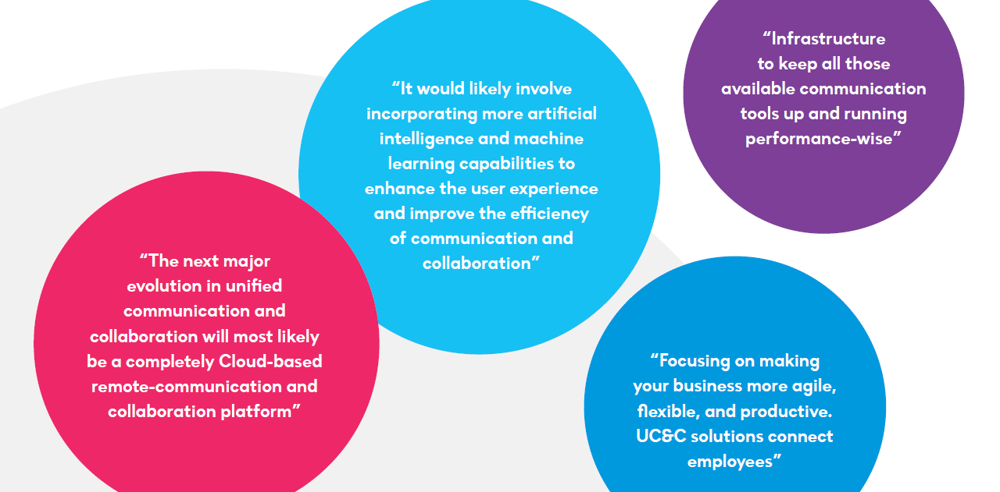
Managing the complexity of today’s UC environments
These predictions reinforce the solid link between monitoring and performance management solutions, user satisfaction, and more streamlined business operations.
With the shift to remote working at scale and the accelerated implementation of cloud collaboration platforms, IT teams are tasked with managing increasingly complicated UC&C environments.
It’s clear from the responses in this survey that IT teams need help to reduce time wasted solving often recurring issues. They want systems in place to manage the complexity of remote networks, disparate tools and applications, and incompatibilities. They want to increase their productivity, and decrease their workload by working more efficiently.
Organizations who don’t have the systems in place to effectively manage their UC&C environment will not only fall behind their competitors, but risk losing valuable employees.





